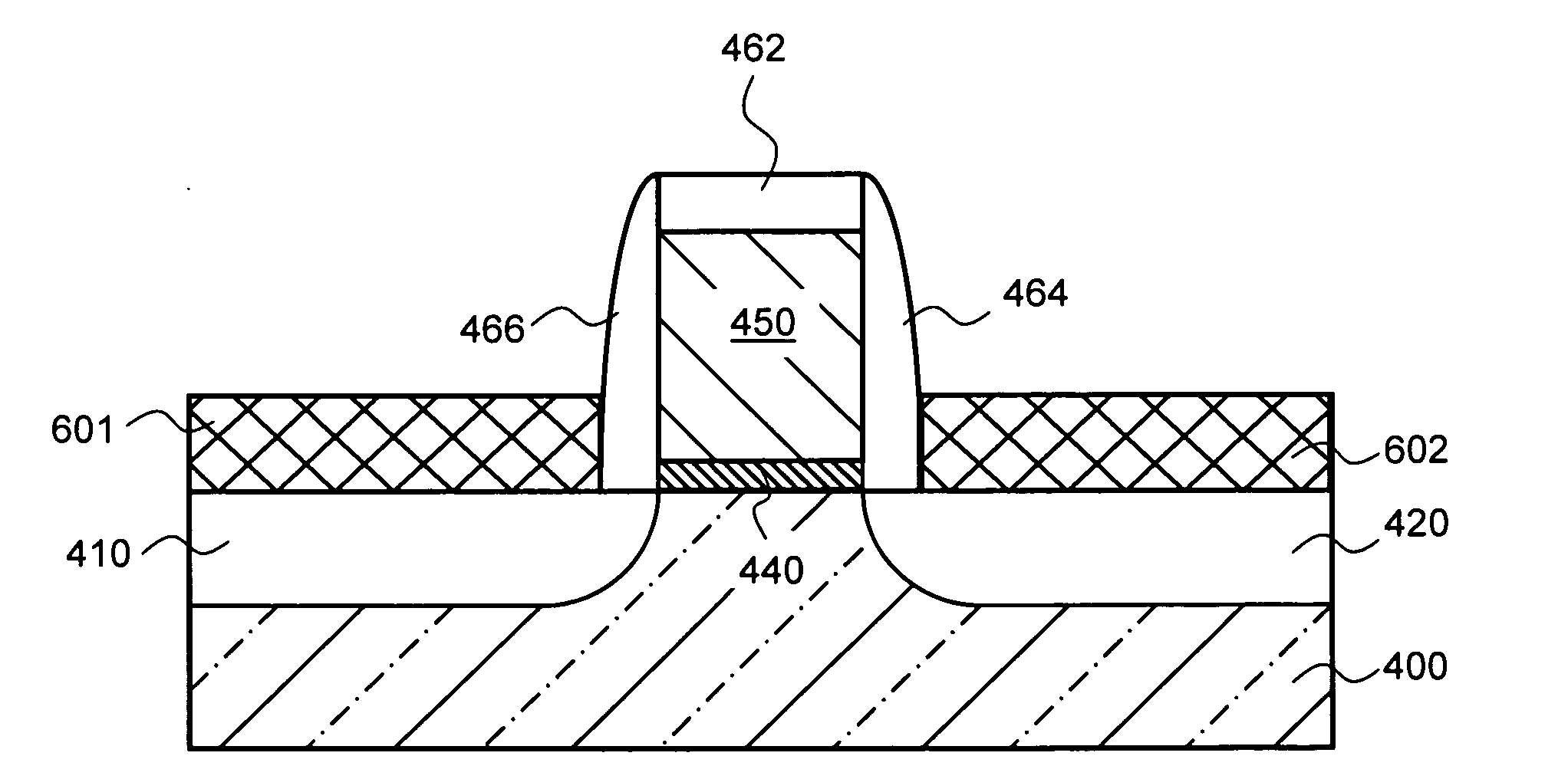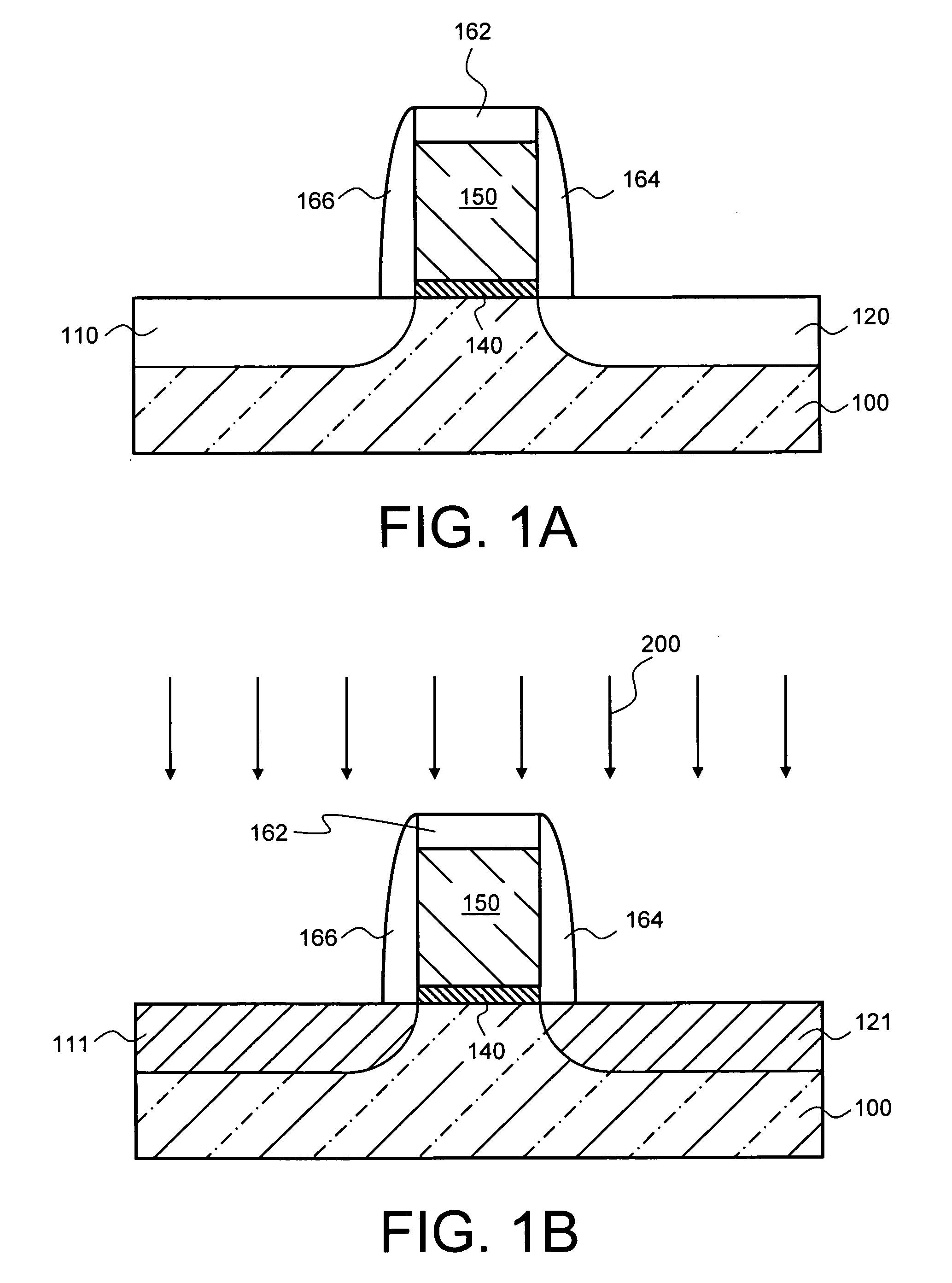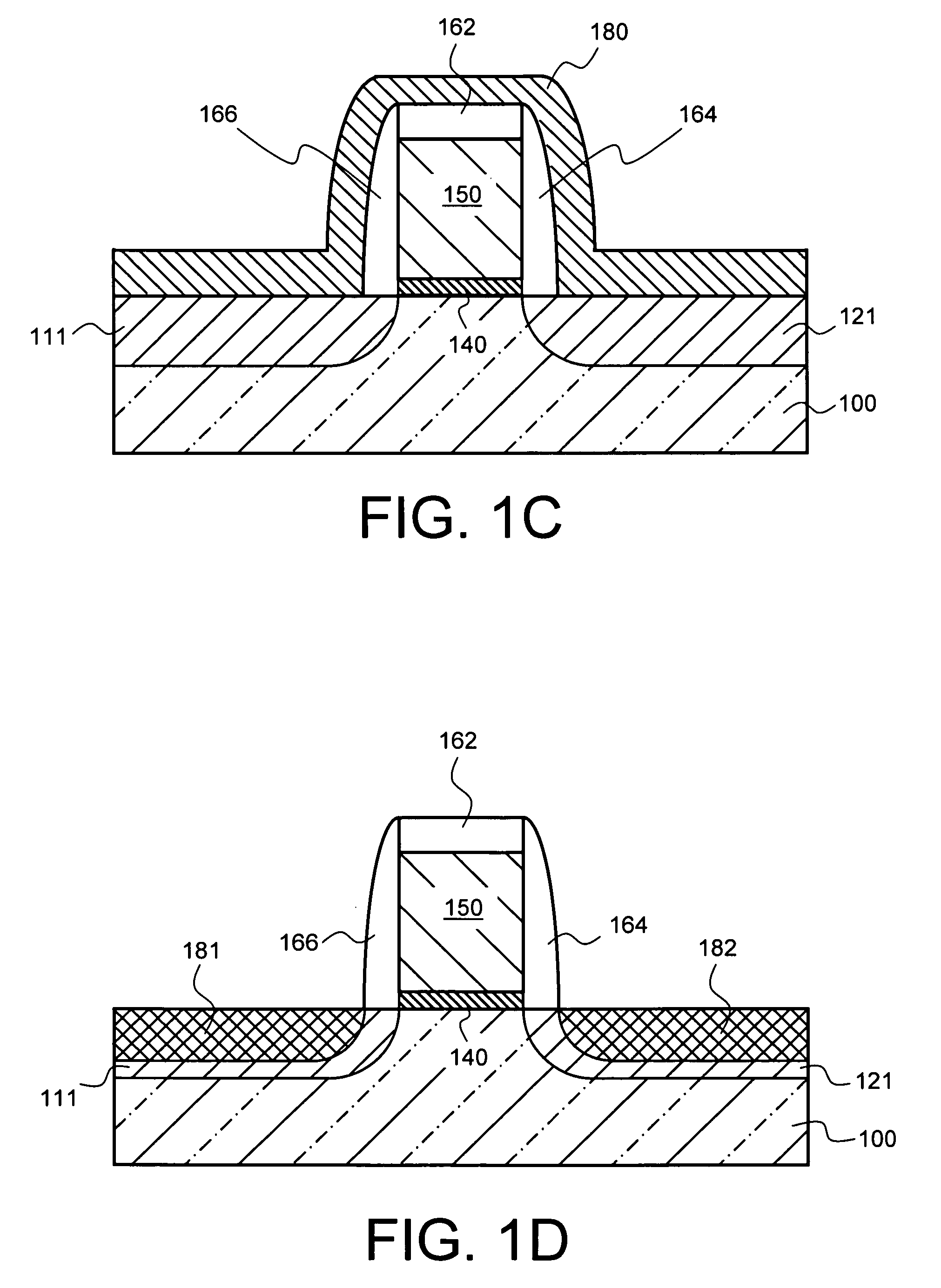Method of forming self-aligned low resistance contact layer
a low-resistance contact layer and self-aligning technology, applied in the field of semiconductor processing, can solve the problems of high junction leakage, increase in the number, and deactivation of dopan
- Summary
- Abstract
- Description
- Claims
- Application Information
AI Technical Summary
Problems solved by technology
Method used
Image
Examples
Embodiment Construction
[0010]A method of forming self-aligned low resistance contact layers is described. In the following description, numerous specific details are set forth in order to provide a thorough understanding of the present invention. In other instances, well known semiconductor processing techniques and features have not been described in particular detail in order not to unnecessarily obscure the present invention.
[0011]Embodiments of the present invention describe a method of forming self-aligned low resistance contact layers on a semiconductor device. In an embodiment of the present invention, the semiconductor device comprises a substrate having a source region and a drain region. An amorphous semiconductor layer is then selectively deposited onto each of the source and drain regions by alternatingly exposing the substrate to a first precursor and a second precursor. In one embodiment, the substrate is alternatingly exposed to the first and second precursors by using a plasma enhanced che...
PUM
 Login to View More
Login to View More Abstract
Description
Claims
Application Information
 Login to View More
Login to View More - R&D
- Intellectual Property
- Life Sciences
- Materials
- Tech Scout
- Unparalleled Data Quality
- Higher Quality Content
- 60% Fewer Hallucinations
Browse by: Latest US Patents, China's latest patents, Technical Efficacy Thesaurus, Application Domain, Technology Topic, Popular Technical Reports.
© 2025 PatSnap. All rights reserved.Legal|Privacy policy|Modern Slavery Act Transparency Statement|Sitemap|About US| Contact US: help@patsnap.com



